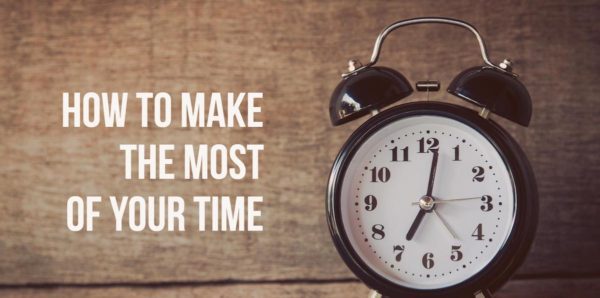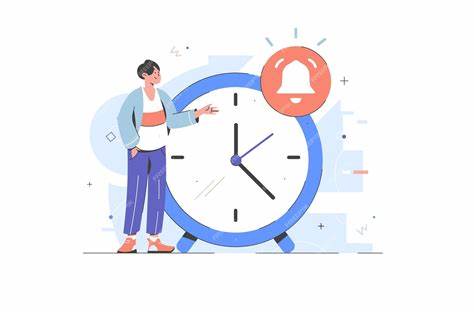In our fast-moving world, we often view idle time — the moments when we aren’t working or doing something productive — as wasted time. But what if we told you that idle time, when managed the right way, can boost creativity, improve well-being, and bring more balance into your life?
Idle time doesn’t have to mean doing nothing. It can be a chance to recharge, reflect, and even grow. In this blog, we’ll explore what idle time really is, why it matters, and how to manage it in a healthy and fulfilling way. Whether you’re a student, professional, stay-at-home parent, or retiree — this article has something valuable for you.

What is Idle Time?
Idle time refers to moments when you are not actively engaged in a task or responsibility. It can happen while waiting in line, during a lunch break, in between meetings, or on a lazy weekend afternoon. It’s simply time that is not scheduled or structured.
While some people fear idleness as being unproductive or lazy, research shows that downtime is essential for mental health, creativity, and cognitive function (Kaufman & Gregoire, 2015).
Why It’s Important to Manage Idle Time Well
1. Idle Time Can Lead to Mind Wandering and Creativity
Our brains need time to rest and wander. When we’re not focused on a specific task, the default mode network (DMN) of the brain kicks in — a state linked to creativity, memory, and self-reflection. According to a study by the University of California, daydreaming activates the brain’s creative centers and helps in problem-solving (Immordino-Yang et al., 2012).
Properly managed idle time can allow your brain to make connections and spark new ideas.
2. Unstructured Time Reduces Burnout
When we over-schedule ourselves without pauses, we increase stress and risk burnout. According to the World Health Organization (WHO), burnout is now officially recognized as a syndrome resulting from chronic workplace stress that has not been successfully managed.
Idle moments provide a mental break. They can be used for deep breathing, light movement, or simply sitting in silence — all of which help restore energy and focus.
3. Idle Time Without Intention Can Lead to Boredom or Bad Habits
On the flip side, unmanaged idle time can lead to mindless scrolling, overeating, or negative thinking. Studies show that boredom is linked to impulsive behavior and lower mood levels (Eastwood et al., 2012). That’s why being mindful of how we use our free moments is key.
How to Manage Idle Time Effectively
Managing idle time doesn’t mean filling every moment with tasks. It means being intentional about how you spend your downtime so that it supports your overall well-being.
1. Use the “3R Method”: Rest, Reflect, Reconnect
Whenever you find yourself with unexpected free time, think of these three options:
- Rest: Close your eyes, stretch, breathe deeply, or take a short nap.
- Reflect: Think about how your day is going. Ask yourself, “How do I feel right now?” or “What did I learn today?”
- Reconnect: Call a loved one, smile at a stranger, or send a thoughtful message.
This simple method helps shift idle moments into enriching ones.
2. Keep a “Mindful Idle Time List”
Instead of reaching for your phone every time you have nothing to do, create a list of enjoyable and meaningful activities you can do in short bursts. Examples include:
- Listening to a podcast
- Journaling a few thoughts
- Stretching or doing 5-minute yoga
- Practicing deep breathing
- Reading a short article or book excerpt
By keeping this list handy, you’ll train your mind to make better use of idle moments.
3. Practice Micro-Mindfulness
You don’t need a 30-minute meditation session to feel grounded. Even 1–2 minutes of focusing on your breath, observing your surroundings, or silently naming what you’re grateful for can create calm and clarity. A Harvard study found that even short moments of mindfulness reduced stress and improved emotional regulation (Goyal et al., 2014).
So, the next time you’re waiting at a bus stop or in a line, just breathe and observe — no phone needed.
4. Avoid Multitasking in Idle Time
It’s tempting to fill idle time by doing two things at once — like checking emails while eating lunch. But research shows that multitasking decreases productivity and increases mental fatigue (Rubinstein et al., 2001). Use idle time to pause, not cram more in.
5. Turn Idle Time into “White Space”
In design, white space is the area left empty on purpose — it helps the main content stand out. Your brain needs white space too.
Allow some idle time in your day with no agenda. This space can:
- Improve creativity
- Boost mood
- Help you problem-solve subconsciously
Give yourself permission to do “nothing,” and you may be surprised what insights emerge.
Age-Appropriate Ways to Manage Idle Time
For Children
Idle time is essential for children to develop imagination. Instead of giving them screens, encourage:
- Coloring
- Building with blocks
- Reading picture books
- Playing outside
These activities promote independent thinking and emotional regulation.
For Teenagers
Teens often fill idle time with social media, which can affect mental health. Encourage them to:
- Learn a new skill (coding, music, art)
- Volunteer locally
- Read or listen to audiobooks
- Practice short mindfulness sessions
Idle time should be a break from pressure, not an escape from boredom.
For Adults
Use idle time to recharge or reconnect. Consider:
- Short walks
- Gratitude journaling
- Unplugged moments with family
- Listening to calming music or nature sounds
Even a 10-minute break between meetings can reset your focus.
For Seniors
Idle time can become meaningful through hobbies, reflection, or community. Options include:
- Gardening
- Crossword puzzles
- Calling a friend
- Light stretching or tai chi
Purposeful idle time helps prevent loneliness and cognitive decline.
Tips to Create More Healthy Idle Time
- Schedule breaks: Add short breaks into your calendar just like you would for meetings.
- Unplug periodically: Take tech-free breaks during the day to reduce digital fatigue.
- Let go of guilt: Idle time is not wasted time. It’s recovery time.
- Balance busyness: Too much idle time may lead to restlessness, and too little leads to burnout. Find your middle ground.
Conclusion: Embrace the Power of Doing Nothing — Wisely
Idle time isn’t something to avoid. When used intentionally, it becomes a secret weapon for creativity, calmness, and clarity. Instead of fearing free moments, we can learn to use them to rest, reflect, and reconnect with ourselves and the world.
So the next time you find yourself with nothing to do — don’t rush to fill the gap. Instead, ask: “How can this moment nourish me?” That question alone can change how you experience time.
दैनिक कार्यों को स्वचालित करने का सही तरीका
References
- Kaufman, S. B., & Gregoire, C. (2015). Wired to Create: Unraveling the Mysteries of the Creative Mind. TarcherPerigee.
- Immordino-Yang, M. H., Christodoulou, J. A., & Singh, V. (2012). Rest is not idleness: Implications of the brain’s default mode for human development and education. Perspectives on Psychological Science, 7(4), 352–364. https://doi.org/10.1177/1745691612455994
- Eastwood, J. D., Frischen, A., Fenske, M. J., & Smilek, D. (2012). The unengaged mind: Defining boredom in terms of attention. Psychological Bulletin, 139(3), 482–497. https://doi.org/10.1016/j.cpr.2011.11.003
- Goyal, M., Singh, S., Sibinga, E. M., et al. (2014). Meditation programs for psychological stress and well-being: A systematic review and meta-analysis. JAMA Internal Medicine, 174(3), 357–368. https://jamanetwork.com/journals/jamainternalmedicine/fullarticle/1809754
- Rubinstein, J. S., Meyer, D. E., & Evans, J. E. (2001). Executive control of cognitive processes in task switching. Journal of Experimental Psychology: General, 130(1), 3–22. https://doi.org/10.1037/0096-3445.130.1.3

